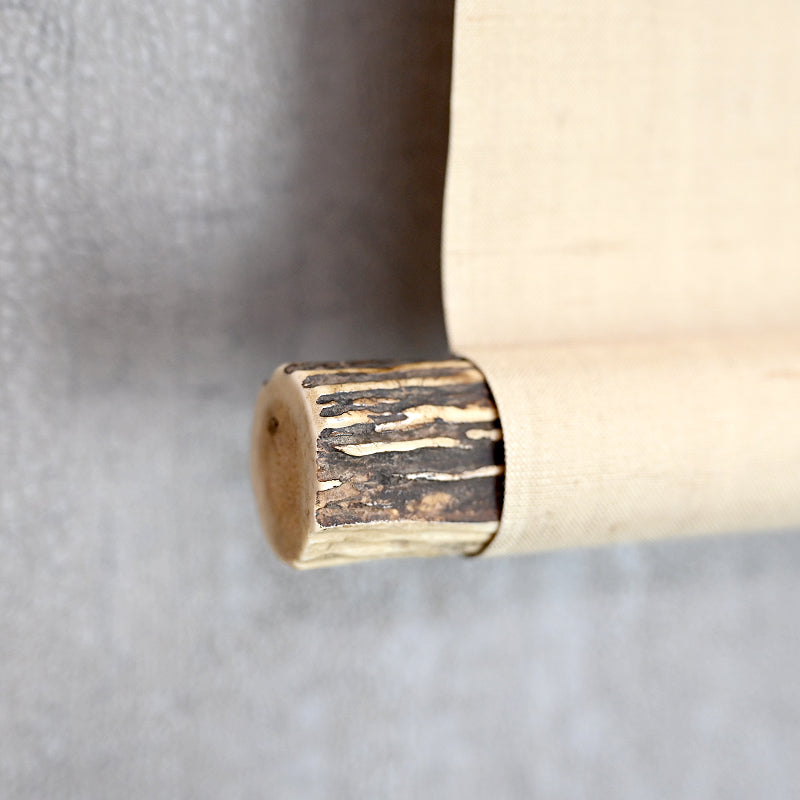18th-19th c. Nozarashi Skull by Priest ー豪潮 寛海
18th-19th c. Nozarashi Skull by Priest ー豪潮 寛海
Item Code: Z051
Couldn't load pickup availability
A skull lies abandoned among the dried grasses of a cold field accompanied only by a brief Haiku by mid Edo period priest Gocho Kankai. Ink on paper, it has been completely remounted in beige cloth reflecting the original and retains the unusual stag-horn rollers. The scroll is 37 x 170 cm (14-1/2 x 67 inches ) and is in excellent condition.
The poem reads:
花の時 / Hana no toki
迷ひしもこの / mayoishimo kono
枯野かな / kare no kana
Loosely perhaps: When in blossom, it is easy to forget this dried lonely field…
Gocho Kankai (1749〜1835) was born the second son of a Jodo Shin-sect priest in Kumamoto Prefecture, Kyushu. However in 1755, he began training under Gokyo Ajari at the Reigenji Temple of the esoteric Tendai-sect at just 7 years of age. His talents were noticed and he went to Enryaku-ji temple on Mount Hie outside Kyoto at the age 16 where he recived Inka in 1768. In 1776, he became the chief priest of Jufuku-ji Temple in his hometoen of Tamana. Gocho became celebrated a healer and also admired as a painter and calligrapher. In 1818, he was invited by Tokugawa Naritomo, the lord of the Owari domain to build a Buddhist stupa at Bansho-ji temple. In 1823 he completed the construction of Choeiji Temple in Nagoya. His imagery ranges from elaborate depictions of Buddhist deities to ink paintings in Zen style, and his calligraphy is notable for its fluent power. (Stephen Addiss: 77 Dances, Japanese Calligraphy by Poets, Monks, and Scholars, p.231.)
Share
























